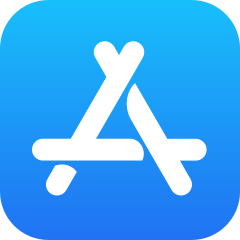There are different types of users in iFlow so that you can keep your workplace hierarchy. As there are different types of employees with varying responsibilities with iFlow, you can give permissions to your users so that what happens in the software will resemble the reality.
Find out in this article which are the three types of users, and which are the permissions you can give to keep your workplace hierarchy. Manage your employee’s work-related record correctly with iFlow.
Admin
As you can tell from the name, we’re talking about your iFlow’s account administrator. The “Admin” is the first user, the one that creates your company’s account. This type of user has full control of added employees and also of the account settings.
As the administrator, you have full access to the whole app, you add employees, create teams, choose the role of all the employees in your company, fill in your employee’s data, and set permissions for them. And also, you choose the way your employees can see each other in the application, you create events and set the Timesheet report’s settings.
There is a set of permissions that you can use to: give access to reports for human resources employees, access to events, or you can choose to exclude employees from reports. Read further to find out how you can use these permissions to your advantage.
Team leader
This type of user has fewer rights than the administrator, but more rights than a team member. The team leader has control over the teams that he manages, and this means he can add events for them and also approve or deny them. He has access to the employee’s data, and he can fill it in and edit it. He has access to all employee’s documents – request and human resources documents that he can print and/or download. He also has access to all the human resources reports in the app, but he can only see them, for data safety, he doesn’t have editing rights.
Team member
This type of user represents the ordinary employee and has access to the following panels: Dashboard, Work schedule, and Activity. He can add the following events: paid and annual leave, time off, and over time, but he cannot approve or deny them. As a team member, you can only see the work schedule. iFlow is a flexible software, and that is why you can give your employees the right to edit their working schedule.
Which are the permissions and the methods in which employees can see each other?
There are 3 methods through which employees can see each other, and only the admin can decide which is the appropriate one for the company, that is why he is the only one who can choose the setting. The 3 methods are:
- Employees can only see teammates
- Employees can see all employees
- Employees can only see themselves
There is a set of 6 permissions that an administrator can give to his employees, these are:
- To receive e-mail notifications
- To edit the work schedule
- To edit the live attendance
- Access to all reports
- Exclude from reports
- Access to all events
Benefits from extending your employees rights with permissions in iFlow
We’ve created a few examples of how extending rights for employees works in the application.
- You have a human resources employee who is responsible for your employee’s management, and you don’t want this employee to be a team leader but to have access to reports so that he can download or print them. All you need to do is: access your employee’s profile – click on “Settings” – “Permissions” check the checkbox for “Has access to all reports”. This way, this employee can access all reports without other rights.
- If you, as the administrator, don’t want to appear in reports, all you need to do is: Access your profile, then click “Settings” – “Permissions” check the checkbox “Exclude from reports”. It goes the same way for employees that you don’t want to appear in reports.
- If you have an employee who is responsible for the working schedule, you have to check the checkbox for “Schedule editing permission” by the teams for which you want your employee to be able to edit the working schedule. This permission can be set for team leaders for one or all the team he is supervising.
- The “Has access to all events” permission can be set for an employee that you want to have more rights, but you don’t want to change his user category in administrator. This employee will be able to add, edit, approve, deny, or delete events.
These are just a few examples of how you can use these permissions. In general, these rights are used for team leaders and team members. Admins only use permissions for e-mail notifications and exclude from reports.
iFlow gives you the liberty to use all the functionalities and settings exactly how you need. Try to build your company’s hierarchy in iFlow, and you’ll see how easy it is to manage your employees.






